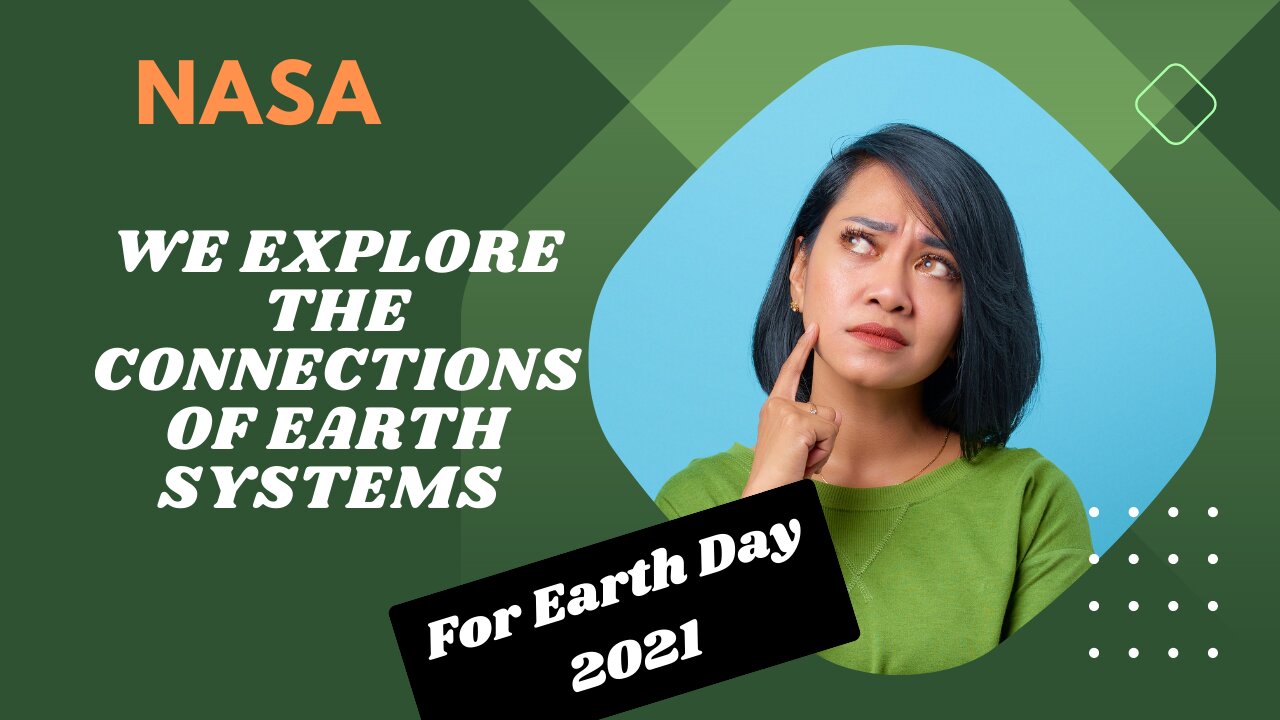Premium Only Content

Earth Day 2021 focused on exploring the interconnectedness of Earth systems and NASA's role
Dust Transport and Vegetation:
Dust can have a significant impact on vegetation health and distribution. Dust particles can carry nutrients and minerals that are essential for plant growth across long distances. This process, known as "dust fertilization," can influence vegetation patterns and ecosystem dynamics. NASA's observations help monitor dust transport and its interactions with vegetation to better understand these relationships.
Water Quality and Conservation:
Water quality is closely tied to the health of aquatic ecosystems and human well-being. NASA's remote sensing technologies play a crucial role in monitoring water quality by assessing parameters such as water temperature, turbidity, and nutrient concentrations. This information aids in the conservation and management of water resources, helping to ensure sustainable water supplies for both natural systems and human populations.
Human Health:
The quality of the environment, including air and water, directly impacts human health. Dust, air pollutants, and water contaminants can have adverse effects on respiratory and cardiovascular health. NASA's ability to monitor and forecast these pollutants provides valuable information for public health organizations and policymakers to take appropriate measures to mitigate health risks.
Cryosphere:
The cryosphere includes polar ice sheets, glaciers, sea ice, and snow cover. Changes in the cryosphere have profound effects on sea level rise, ocean circulation, and global climate patterns. NASA's satellite observations provide critical data on the extent and thickness of ice, helping scientists understand how the cryosphere responds to changing climate conditions.
Disasters:
Natural disasters, such as hurricanes, wildfires, and earthquakes, can have devastating impacts on ecosystems and communities. NASA's Earth observation capabilities assist in disaster monitoring, prediction, and response. Satellite data help track the development of storms, monitor fire and flood extent, and assess the aftermath of disasters, enabling better disaster management and response strategies.
The overarching message of Earth Day 2021 was to highlight the intricate connections between these Earth systems and the role of NASA's Earth science programs in observing and understanding these interactions. By studying these connections, scientists and policymakers can make informed decisions to address environmental challenges and promote sustainable practices to protect our planet's health and well-being.
-
 LIVE
LIVE
Rallied
7 hours ago $16.25 earnedWARZONE SOLO CHALLENGES ALL DAY
9,523 watching -
 LIVE
LIVE
StoneMountain64
3 hours agoBattlefield 6 Favorite Weapons, Vehicles, and Strategies
2,798 watching -
 1:10:03
1:10:03
Michael Franzese
12 hours agoWhy do we allow incompetent people in government decide our lives?
39.7K40 -
 1:33:49
1:33:49
MattMorseTV
6 hours ago $30.88 earned🔴Trump has a NEW DEAL.🔴
60.5K58 -
 2:55:27
2:55:27
Mally_Mouse
9 hours agoSpicy HYDRATE Saturday! -- Let's Play!
44.9K4 -
 1:38:06
1:38:06
GameWithV
3 hours ago $0.01 earnedSaturday Play
15K1 -
 LIVE
LIVE
Spartan
4 hours agoHalo for a bit, Octopath after maybe
256 watching -
 2:58:09
2:58:09
SavageJayGatsby
5 hours agoSpicy Saturday with Mally! - Wedding in 2 Months!
35.2K1 -
 1:47:14
1:47:14
VapinGamers
7 hours ago $2.05 earnedTools of the Trade - Does Production Matter? with Tim the Tool Man from Louder with Crowder
26.3K2 -
 LIVE
LIVE
BSparksGaming
5 hours agoHappy Saturday! Battlefield 6 Beta! PS5 Gameplay
81 watching